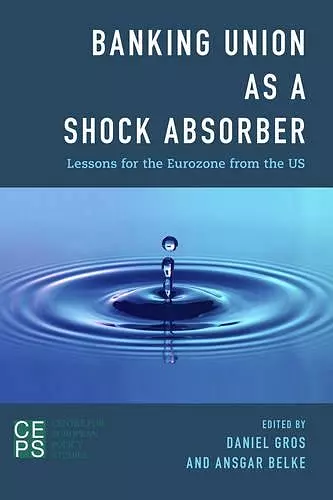Banking Union as a Shock Absorber
Lessons for the Eurozone from the US
Ansgar Belke author Daniel Gros author
Format:Hardback
Publisher:Rowman & Littlefield International
Published:16th Dec '15
Currently unavailable, and unfortunately no date known when it will be back
This hardback is available in another edition too:
- Paperback£25.00(9781783485956)

The Great Financial Crisis, which started in 2007-08, was originally called the ‘sub-prime’ crisis because its origins could be traced to excessive lending in the real estate sector in the US, concentrated mostly in sunbelt states like Nevada, Florida and California. There were similar pockets of excess lending for housing in Europe, notably in Ireland and Spain. But a key difference emerged later: in Ireland and Spain, the local banking systems almost collapsed and the governments experienced severe financial stress with large macroeconomic costs. Nothing similar happened in the US. The local financial system remained fully functional and the local governments did not experience increased financial stress in the states with the biggest real estate booms, like Nevada or Florida. This book illustrates how the structure of the US banking market and the existence of federal institutions allowed regional financial shocks to be absorbed at the federal level in the US, thus avoiding local financial crisis. The authors argue that the experience of the US shows the importance of a ‘banking union’ to avoid severe regional (national) financial dislocation in the wake of regional boom and bust cycles. They also discuss the extent to which the institutions of the partial banking union, now in the process of being created for the euro area, should be able to increase its capacity to deal with future regional boom and bust cycles, thereby stabilising the single currency.
ISBN: 9781783485949
Dimensions: 236mm x 160mm x 12mm
Weight: 345g
98 pages